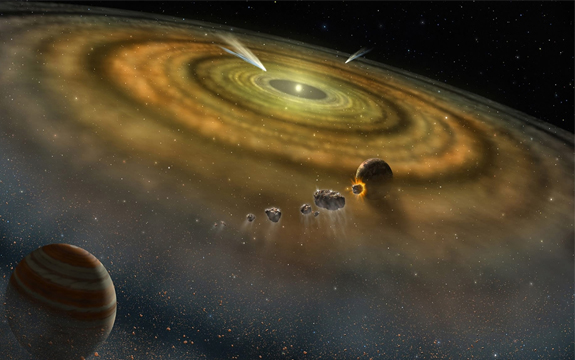Adding a new dimension to the early chemistry of the Solar System

In Summary
- Researchers have calculated the dust chemistry of the solar nebula (thin dusty ring around young sun)
- 2D modelling of solar nebula shows surprising results
- They found relatively high temperature regions at larger distances from the sun on the surface of the disk and colder regions in the inner disk closer to the sun
Using sophisticated computer simulations, an international research team have discovered new insights into the chemical composition of the dust grains that formed in the solar system 4.5 billion years ago.
Researchers from Swinburne University of Technology, Melbourne and the University of Lyon, France, calculated a two-dimensional map of the dust chemistry in the solar nebula, the thin dusty disk that surrounded the young sun and out of which the planet formed.
It is expected that refractories (high temperature materials) should be located close to the young sun, while volatile materials (such as ices and sulphur compounds) should form far from the sun where temperatures are cooler.
However, the new maps produced by the research team revealed a complex chemical distribution of the dust, where refractory materials were also present at large distances from the sun on the surface of the disk. Volatile materials were also found in the inner disk close to the young sun.
“The new two-dimensional calculations have given us a clearer idea of the pristine chemistry in our solar system soon after its formation,” says lead researcher Francesco Pignatale.
“While solar nebular is thin, it is two-dimensional. This makes it possible to find relatively high temperature regions at larger distances from the sun on the surface of the disk that are heated by the sun’s rays.
“We also find colder regions in the inner disk closer to the sun. Here the high concentration of dust prevents the stellar radiation from efficiently heating the local environment.”
This research was conducted as part of Dr Pignatale’s PhD at Swinburne.
The research team also included Swinburne Dean of Science, Professor Sarah Maddison, Dr Kurt Liffman and Professor Geoff Brooks.
This research was published in the Monthly Notices of the Royal Astronomical Society.

